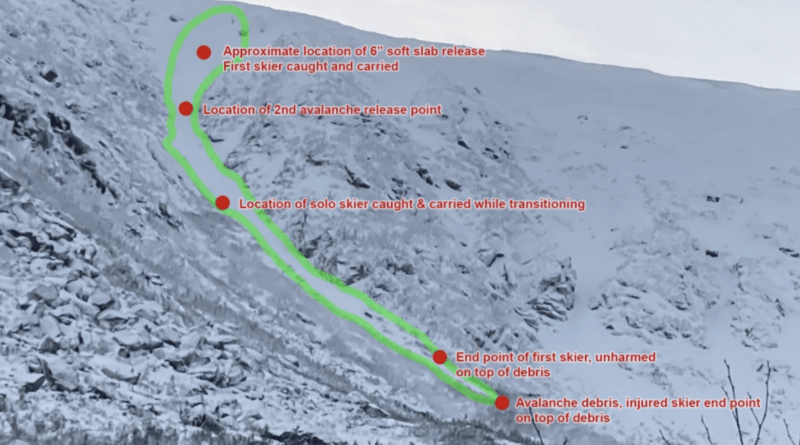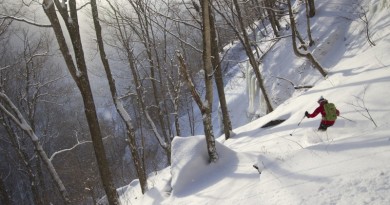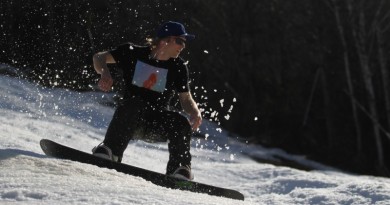Skier Sustains Severe Injuries in Avalanche on Mt. Washington
With fewer than 8 inches of snow falling in December, it didn’t feel like avalanche season. Yet on Dec. 5, a skier triggered an avalanche in Tuckerman Ravine on Mt. Washington that could have been fatal. The skier slide more than 800 feet and triggered a second slide that sent a funnel of snow down Left Gully, taking out another solo skier who was just getting ready to descend. The avalanche swept him over rocks, leaving the solo skier with serious injuries. As of Dec.7, he was stable but still hospitalized.
“Human triggered avalanches are actually not that unusual at this time of year,” says Jeff Fongemie, the acting director of the Mt. Washington Avalanche Center. “If you had considered that it had snowed 1 to 3 inches each day for the past few days and we had high winds that might have been an indication that there could be wind slabs and the snow could be unstable.”
According to MWAC, the Dec. 5 slab was measured at 20 inches at its thickest spot: “The avalanche was large enough to bury, injure, or kill a person and encompassed a medium-sized portion of the whole slide path,” the report stated/ Fortunately, a number of people witnessed the incident and the Harvard Cabin Caretaker as well as Forest Service Snow Rangers were able to rescue the one injured skier who was hospitalized with severe injuries.
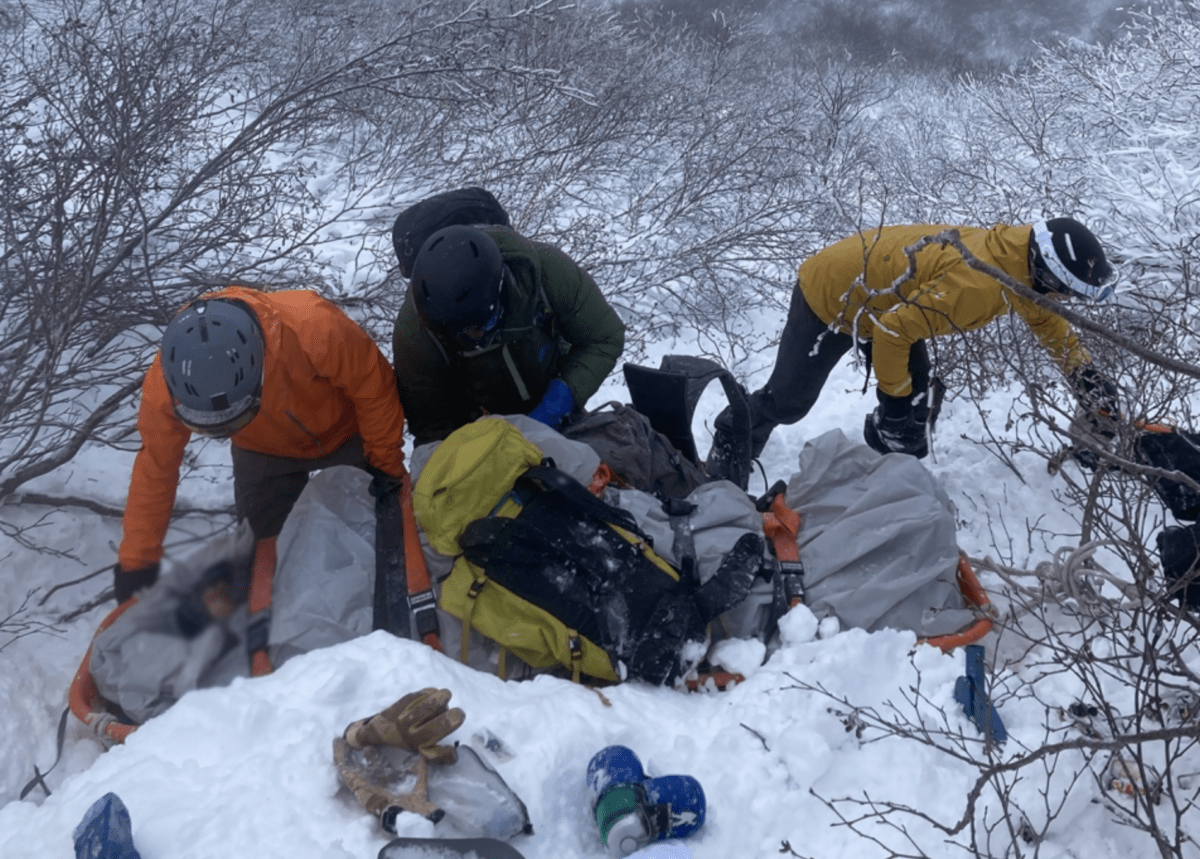 The incident recalled an event last winter when Ian Forgays, a highly experienced skier from Lincoln, Vt. traveled to Mt. Washington to ski Monroe Gulley by himself. The weather was fine and the forecasted avalanche danger was not high. Still, Forgays managed to set off a pocket of windslab. He was buried and his body was found two days later. (See the full report: Skiin’ Ian’s Final Run.)
The incident recalled an event last winter when Ian Forgays, a highly experienced skier from Lincoln, Vt. traveled to Mt. Washington to ski Monroe Gulley by himself. The weather was fine and the forecasted avalanche danger was not high. Still, Forgays managed to set off a pocket of windslab. He was buried and his body was found two days later. (See the full report: Skiin’ Ian’s Final Run.)
The skiing on the east side of Mount Washington has many variables and wind is a fairly consistent driving force behind the avalanche forecast. If we have new snow and wind you are likely to find slabs of drifted snow that can act unstable, resulting in an avalanche. The current terrain options are very confining and committing to a point where there’s usually someone above or below you at any given time. It can be a good thing that there are plenty of hands to contribute to a rescue, but awareness of those around you should also steer your decision-making.
“It feels like there are a lot skiers out there hungry for snow right now,” noted Fongemie. “The challenge is that there’s not much terrain that’s skiable. There’s little cover, lots of exposed rocks and if an avalanche comes down Left Gully, there’s no place to ski out. The skiers who triggered the avalanche had no idea there was anyone below them and the solo skier who was injured had no idea there were skiers above him,” he said.
The accident report reads as follows:
Late morning, two skiers climbed to the top of Left Gully, evaluating the snowpack using hand-shear tests along the way. They found softer snow than expected but no obvious signs of instability. Near the top where the constricting rock walls end and the gully opens up, they noted a shallow pillow of wind drifted snow (6” deep maximum) to the right, continuing up and left to avoid the hazard. They transitioned to skis at the top with poor visibility. Both were prepared with avalanche beacons, shovels and probes.
While the two skiers at the top of the ravine were preparing for the ski down, a solo skier reached his highpoint, climbing approximately half way. He stopped, took off his pack, and removed his skis attached to his pack. This solo skier was unaware of the two skiers above preparing to descend. His avalanche rescue beacon was turned on well before he entered avalanche terrain.
Back at the top of the gully, the two skiers made a plan to ski the steeper entry on the right, appropriately skiing one at a time. When the first skier descended, the soft slab released, pulling the skier off his feet and he was swept down with the debris. Soon after, when the skier and debris reached the narrow constricted portion of the gully, a larger, deeper avalanche was triggered with a crown line that ran wall to wall, approximately 20-26” inches at the highest point. The avalanche was large enough to bury, injure, or kill a person and encompassed a medium-sized portion of the whole slide path (D2-R3). This skier was carried approximately 800 vertical feet by the avalanche, coming to a stop at the entrance of the gully near a rock buttress separating Chute from Left Gully. He was unhurt, and on top of the snow.
At the same time, the solo skier had not yet removed his crampons when he was caught by the same avalanche and carried approximately 450 vertical feet, encountering rocks along the way, arriving at a point further downhill than the first skier. He was on top of the snow with injuries that included bleeding, open fractures of the arm, leg, and a fractured hand.
The remaining skier above descended on skis with continued poor visibility looking for clues to help find potential victims. He quickly found his partner (the first skier), and the injured solo skier. A beacon search of the debris was conducted to rule out additional buried victims of the avalanche. The two skiers moved in to help the solo skier, managing bleeding when the Harvard Cabin Caretaker arrived on scene immediately notifying USFS Snow Rangers using a radio. After a patient assessment, continued management of the open fractures, the patient was packaged in a rescue litter. A Snow Ranger arrived on scene to direct transport. A team consisting of Snow Rangers, Harvard Cabin Caretaker, the two skiers from above and several kind bystanders spent the next four hours carrying/dragging the patient litter sled over rocks and snow to roadside EMS services arriving at approximately 5:30 pm.
When asked what the skiers could have done differently, Fongemie hesitated. “They were all experienced and carrying beacons and avy gear. The two skiers at the top had done hand shear tests but doing stability tests when you are that far up is sort of like crawling into the barrel of a gun to see if there’s a bullet in there. Once you are there, it’s too late,” he says.
The other recommendation he made was to always travel with a partner. “A partner is more than just a shovel to dig you out. It’s someone who can be another set of eyes for you, and who can help in assessing the terrain and help in decision making,” Fongemie said.
His overall advice for skiers and riders? “It’s still early season. Be patient, it’s a long season ahead.”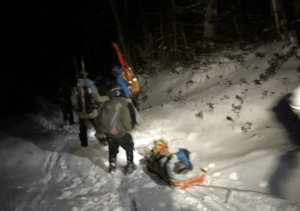
In addition, the report posted by the MWAC, gave this analysis:
If we have new snow and wind you are likely to find slabs of drifted snow with the potential to be unstable, resulting in an avalanche when additional load is added such as a skier or climber. This can and does occur before the Mount Washington Avalanche Center issues a daily avalanche forecast with a hazard rating. Due to shallow snow cover overall, the current terrain options for skiing are limited. Left Gully has been a very popular destination for skiers over the last few weeks with snow coverage top to bottom. The gully is long, constricting with no options to escape until the bottom opens up. With poor visibility it may be impossible to see if anyone is above or below, adding an additional hazard beyond the snowpack alone. Early season excitement, limited terrain to ski, solo skiing, shallow snowpack with rock filled run-outs, poor visibility and recent wind drifted snow are all factors that contributed to this unfortunate event.
It’s worth remembering that we have a long winter ahead with (hopefully) plenty of snow. Slow down, think carefully about decisions you make, and consider that your actions may also impact others. An old saying goes something like this: Experience is a brutal teacher. The test comes first, then the lesson.
Before you head out into the backcountry, please check the forecasts, know the conditions and be aware of the snowpack. Always consult the Mt. Washington Avalanche Center website before heading up Mt. Washington. https://mountwashingtonavalanchecenter.org/forecast/#/presidential-range ‘
All photos by Mt. Washington Avalanche Center. Used with permission

